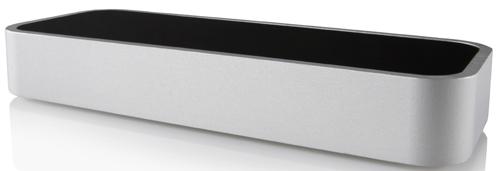Video: Making the Leap to 3D Motion Control
June 8, 2012

If you think professional engineering and design tools are immune to being influenced by the consumer world, think again. Many interactive simulation and user interface innovations that are cropping up in hardcore CAD and CAE packages are taking their cues from the gaming world.
Now, input devices are following in the same direction. Leap Motion, a new motion-control company, is the latest to tackle the challenge of bringing accurate 3D motion control to traditional computer interaction, whether for performing basic computing tasks like navigation or doing more creative work like precise virtual 2D and 3D drawings.
In much the same vein as Microsoft's Kinect Xbox add-on that lets people game via hand and full-on body movements, the Leap attaches to a computer via a USB port and turns it into a gesture-recognition device.
The device's built-in, patented software analyzes images from built-in cameras, which track the individual movements of all 10 of a user's fingers in addition to tracking objects like a pen. And the startup team is touting its accuracy compared to other available offerings (think Kinect), saying it is down to one hundredth of a millimeter, a precision level that is well-suited for touch-free natural gestures controls like pinch-to-zoom.

Founders David Holz and Michael Buckwald envision the Leap filling a gap between what they say is easy to do in the real world but hard to do digitally. Traditional input devices like mice and keyboards make actions that are highly intuitive in the real world, like drawing a picture or manipulating 3D objects -- highly technical tasks. However, existing motion-sensing technology is still pretty crude, they said. That's where the Leap comes in.
"Like molding a piece of clay or creating a 3D model -- that inspired us to create the Leap and fundamentally change how people work with their computers," said Buckwald, Leap Motion's CEO, in a press release.
While CAD users and engineers aren't the sole target audience for this device, company officials see big potential for any professional working with 3D images and in need of large-scale 3D visualization, including scientists or energy experts working with oil exploration maps.
Once calibrated, the Leap creates a three-dimensional interaction space of four cubic feet to control the computer or device with precise gestures. Users can interact with their software tools via a mix of swipes, flicks, and pinches to move 3D models, sketch concepts, or make changes.
Of course, applications like CAD and sketch tools have to support the Leap device in order to enable this new world of gesture-based interaction. To that end, Leap Motion is offering a software development kit and encouraging developers to build native apps or port existing tools over to support the device.
Here's the best news. The Leap is pretty cheap. As it is not available yet, those interested in taking it for a spin can pre-order the device for $69.99.
Related posts:
About the Author(s)
You May Also Like
.jpg?width=300&auto=webp&quality=80&disable=upscale)


